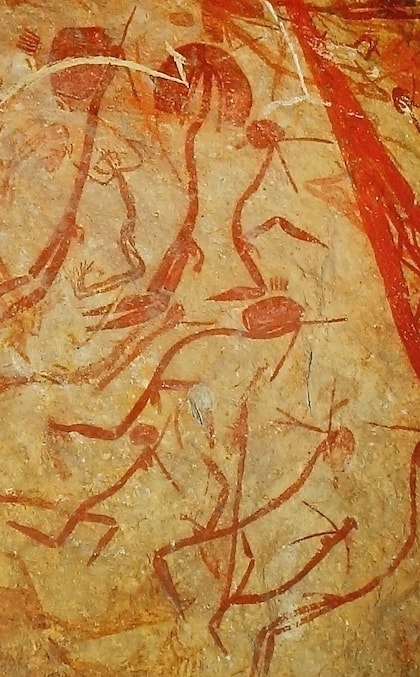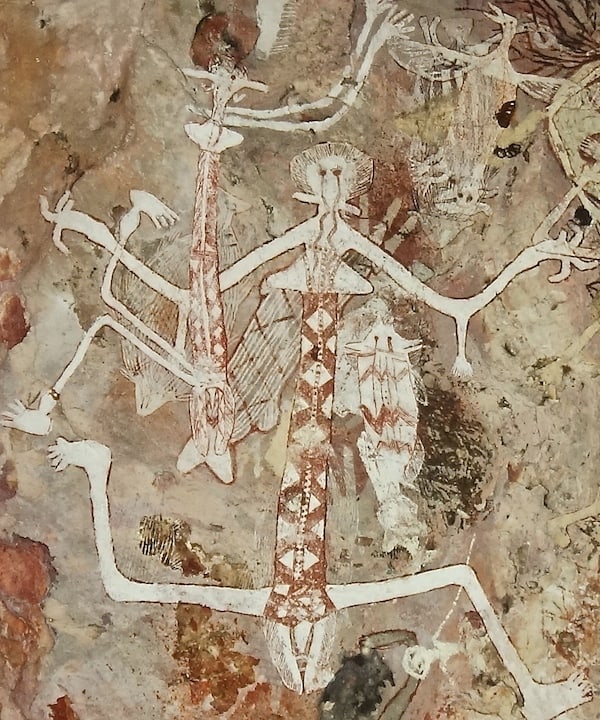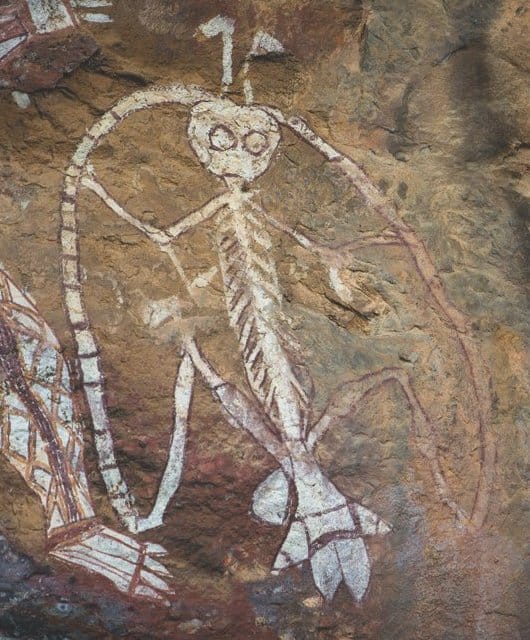Arnhem Land Rock Art
Different regions of Australia have different styles of Rock art. Arnhem Land Rock Art is I think is the artistically most exciting because it is full of spirits and figures. These figurative depictions reflect some of the world’s earliest spiritual beliefs. Arnhem land has 100’s of rock art sites and some of the rock art is up to 20,000 years old.
The best-known rock art from this area are the stick like Mimih figures and X-Ray art which depicts animals and their internal organs.
The aim of this article is to assist readers in appreciating these fascinating art styles found in one of the world’s remotest areas. Rock Art from Arnhem land is the best anywhere in the world.
Rock Art from the Arnhem Land is wonderful but far from the only Aboriginal Cave painting style. Australian Rock Art stretches from Arnhem Land right through Australia to Tasmania
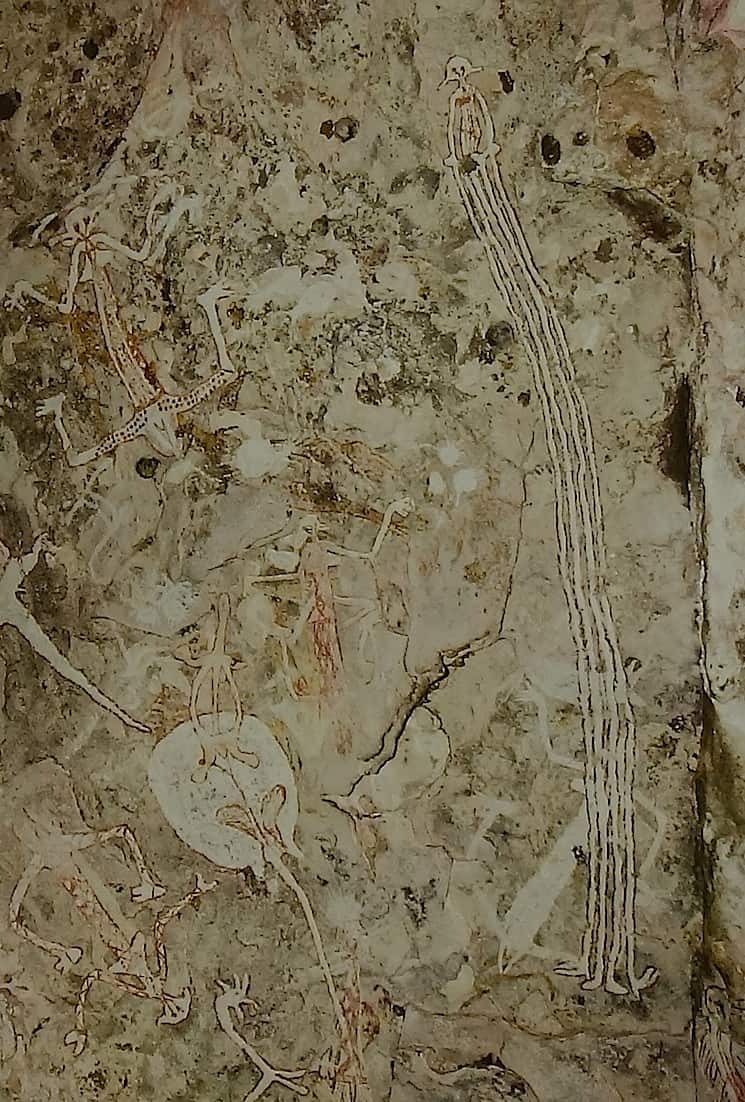
Rock Art sequence Arnhem land
Using different dating techniques it is possible to identify the sequence of changing styles of Arnhem land Art. Different Rock Art Styles developed at different times by people with different cultural beliefs. The art has changed over the millennia. The sequence determined by dating and also by seeing which styles overlay other styles.
Arnhem land Rock painting started around 20,000 years ago so is not as old as Kimberley Rock art (40,000 BCE)
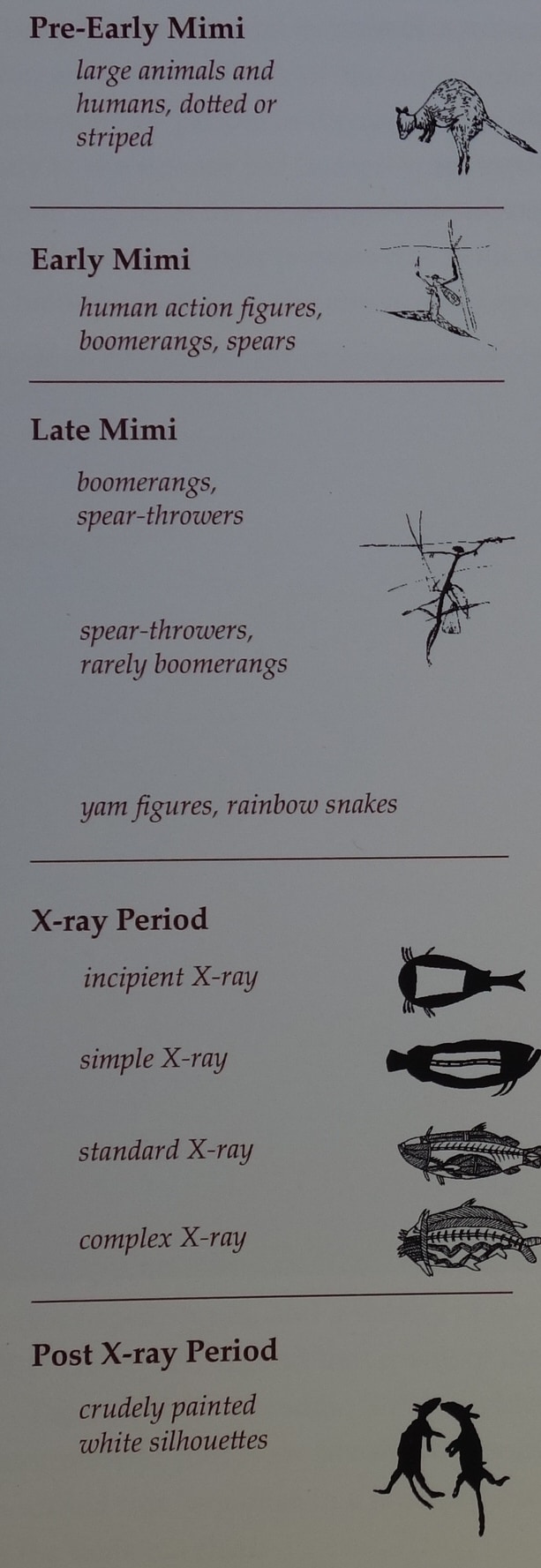
Sequences
Left: Brandl (1973, 1977)
Right: Chaloupka (1984,1993)
Far right: Lewis (1988)


Naturalistic Animals and Figures (Early Phase)
The first Rock art in Arnhem land was the depiction of animals and people in a naturalistic style. These figures are usually quite large and infilled with stipples or dots. These painted naturalistic animals are similar to paintings found in the earliest forms of rock art.
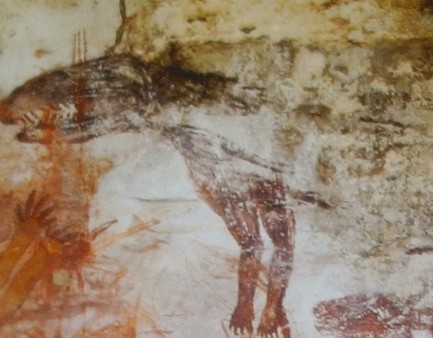
Mimi figures or Mimih figures
Charles Mountford was the first European to undertake a scholarly study of Rock Art in Arnhem Land. Aboriginal informants told Mountford that the red running figures belonged to the old people or Mimi spirits. Mimih spirits are believed to have taught Aboriginal people to paint cook hunt and perform ceremonies. Mimi spirits are thin limbed human-like beings that live in the rock cracks in the escarpments.
Depictions of Mimi figures painted in red ochre are almost like stick figures. They are male and female and are often shown in poses like they are dancing. They are simplistic but extremely elegant and dynamic.
Mimi figure painting occurred in an earlier and later phase. You can determine which phase by the weapons they carry. Early Mimi spirits have either no weapons or a hand-thrown spear or boomerang. Late phase Mimi figures normally have a spear thrower and spear. This is important because it shows an evolution of Aboriginal Weapons within the rock art sequence.
X-Ray Rock Art
Xray rock art is the most recognized form of art from Arnhem land. X-ray art has been around for the last 8000 years and is one of the oldest art traditions in the world. The last Rock Art painter Lofty Bardayal Nadjamerrek was still painting up to the 21st century. Drawing an animal with the internal organs and structure was a traditional way of showing that the painting was of a three dimensional. The painting itself had life and power. The animals and people painted related to songlines or Dreamtime stories. Some of the spirits depicted in X-Ray art like Namarrkon and the Rainbow serpent are spirits that are still honored today.
Aboriginal X-Ray Rock art in the 20th century was the foundation for Aboriginal bark painting. Many of Australias best-known bark painters like Yirawala Murramurra and Kubarrku came from country rich with X-Ray Rock art.

X-Ray bark painting by Lofty Nadjamerrek
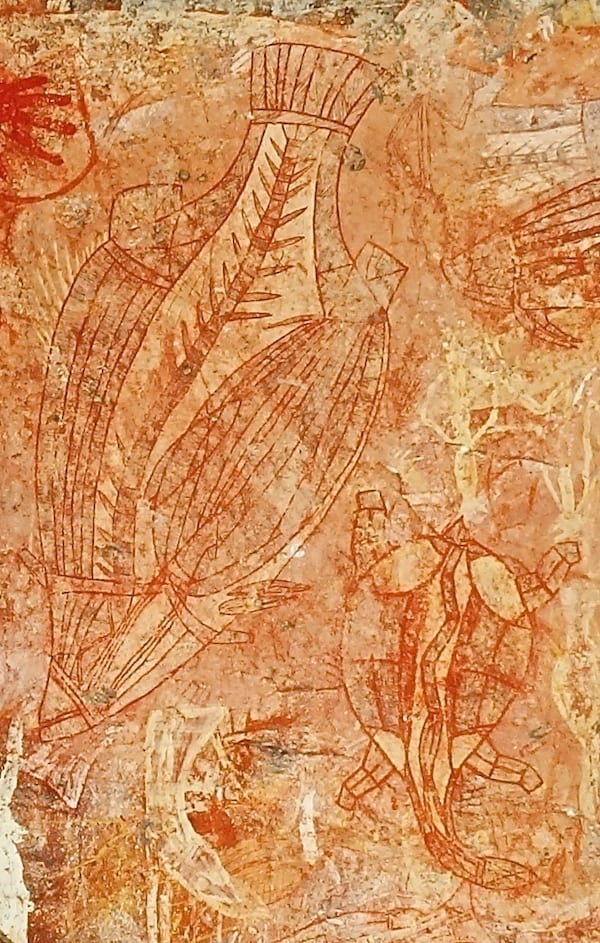
X-ray Barramundi and Turtle
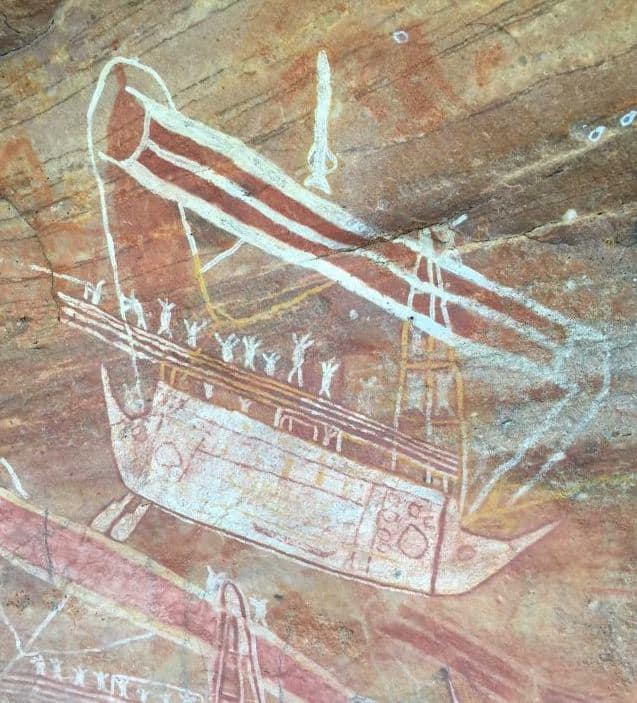
Indonesian Fishing boat or Prau
Post contact rock art and White silhouettes
There is a late phase of human running figures using white pigments that are somewhat like Mimih. The difference is that they tend to be much cruder and less refined. They lack the grace and elegance of the earlier style.
There are also depictions of sailing ships from Indonesia Europe and introduced animals.
The rock painting of Indonesian Prau fishing vessels is particularly important. They show contact between Indonesian fishermen and Aboriginals goes back to the 16th century.

White Silhouettes Rock Art
Arnhem Land Rock Shelter Art Summary
The Aboriginal Rock Art from Arnhem land is a national treasure. It is a superb collection of aboriginal artistic expression that reaches back well into the Neolithic. It has some of the most significant rock galleries of ancient art anywhere on earth. In recent years the government has taken an active role in preserving these sacred places. Rock galleries are now visited by tourism companies
This article would not have been possible without the wonderful publications by Mike Donaldson
Recommended Reading
Australia’s Rock Art: Aboriginal art across an ancient continent by Mike Donaldson
The Archaeology of Rock Art in Western Arnhem Land, Australia
A Journey in time: Australian Aboriginal Rock Art of Arnhem Land
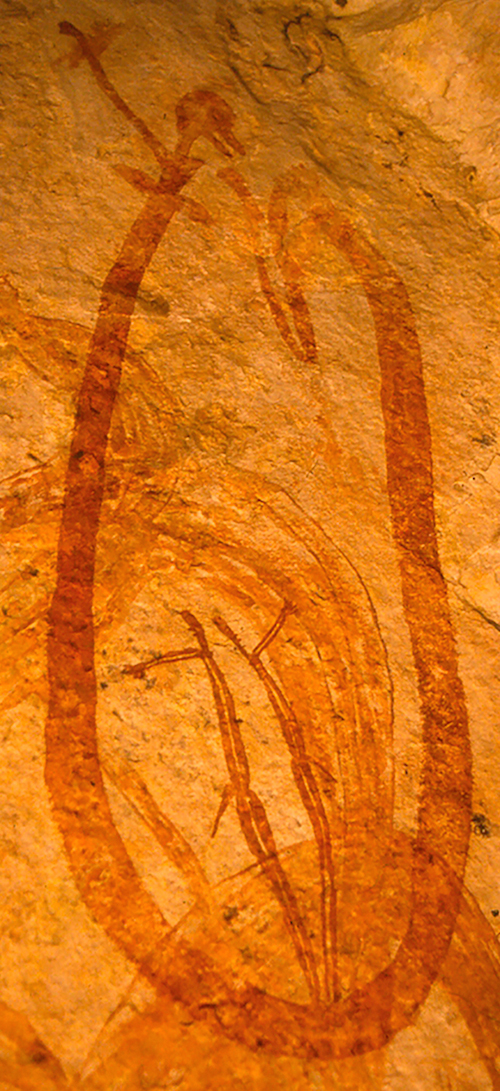
Rock art Inspiration
Arnhem Land Rock Art no doubt inspired the early bark painters. Their country was full of exquisite depictions of legends that they were the custodians of.
Here is an example where Jimmy Ngainjmirra a bark painter has seen and been inspired by his ancestors depiction of the Rainbow serpent.
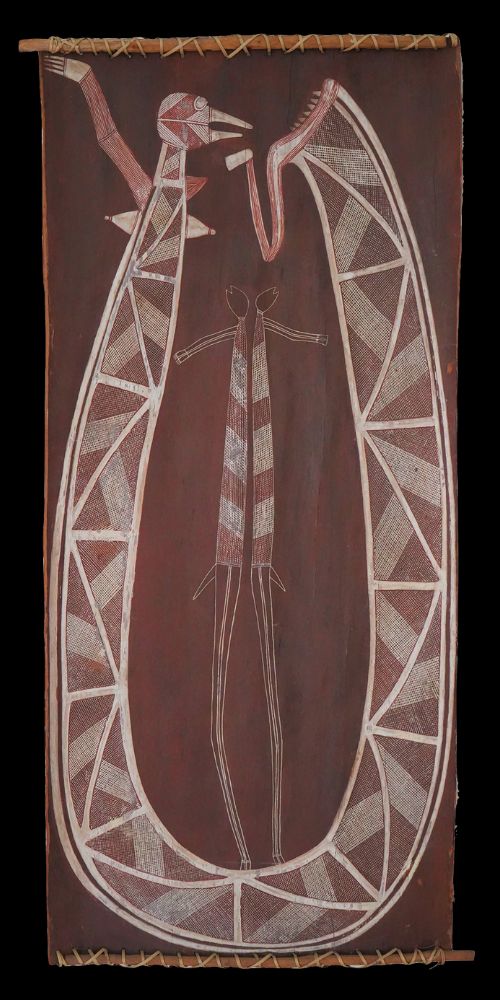
All images in this article are for educational purposes only.
This site may contain copyrighted material the use of which was not specified by the copyright owner.

